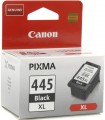—
Pigment. Ink based on pigments – solid dyes, which are diluted in the form of microparticles in a liquid filler to a state of suspension. Compared to more popular water-based inks, these formulations are noticeably more expensive, and the completed image may be somewhat less bright (compared to printing with water-based dye on the same printer). On the other hand, pigment ink gives higher detail, which is especially important for photo printing. In addition, completed images resist moisture better and do not fade as quickly in bright light – this resistance is not enough for outdoor use, but indoors such prints can be stored for a very long time.
—
Water soluble. Inks based on water-soluble dyes allow achieving high realism of colour reproduction in colour printing, they are well absorbed into the deep layers of paper and are cheaper than pigment inks. Also, water-soluble ink does not dry as quickly in the cartridge or print head of the printer. They are recommended for use with inkjet paper – ordinary thin paper strongly absorbs drops, which can cause ink to show through on the back of the sheet. At the same time, water-soluble ink is afraid of moisture and direct exposure to ultraviolet rays – when water gets in, the image on paper “floats”, and it fades under the sun rays.
— Pigmented / water soluble. Some printers and MFPs have a printhead that allows you to print with two types
...of ink at once. A common case is when their black cartridge is filled with pigment ink, and the colour one is filled with water-soluble ink.
— Sublimation. A key feature of sublimation ink is the ability to change from a solid to a gaseous state. When heated to a certain temperature, such paints turn into a “coloured cloud”, which easily penetrates deep into the fibers of the material, fixes on them and forms strong chemical bonds for coloring deep layers. Sublimation ink is commonly used to transfer images onto special paper, glass, ceramics, metal and textiles.
